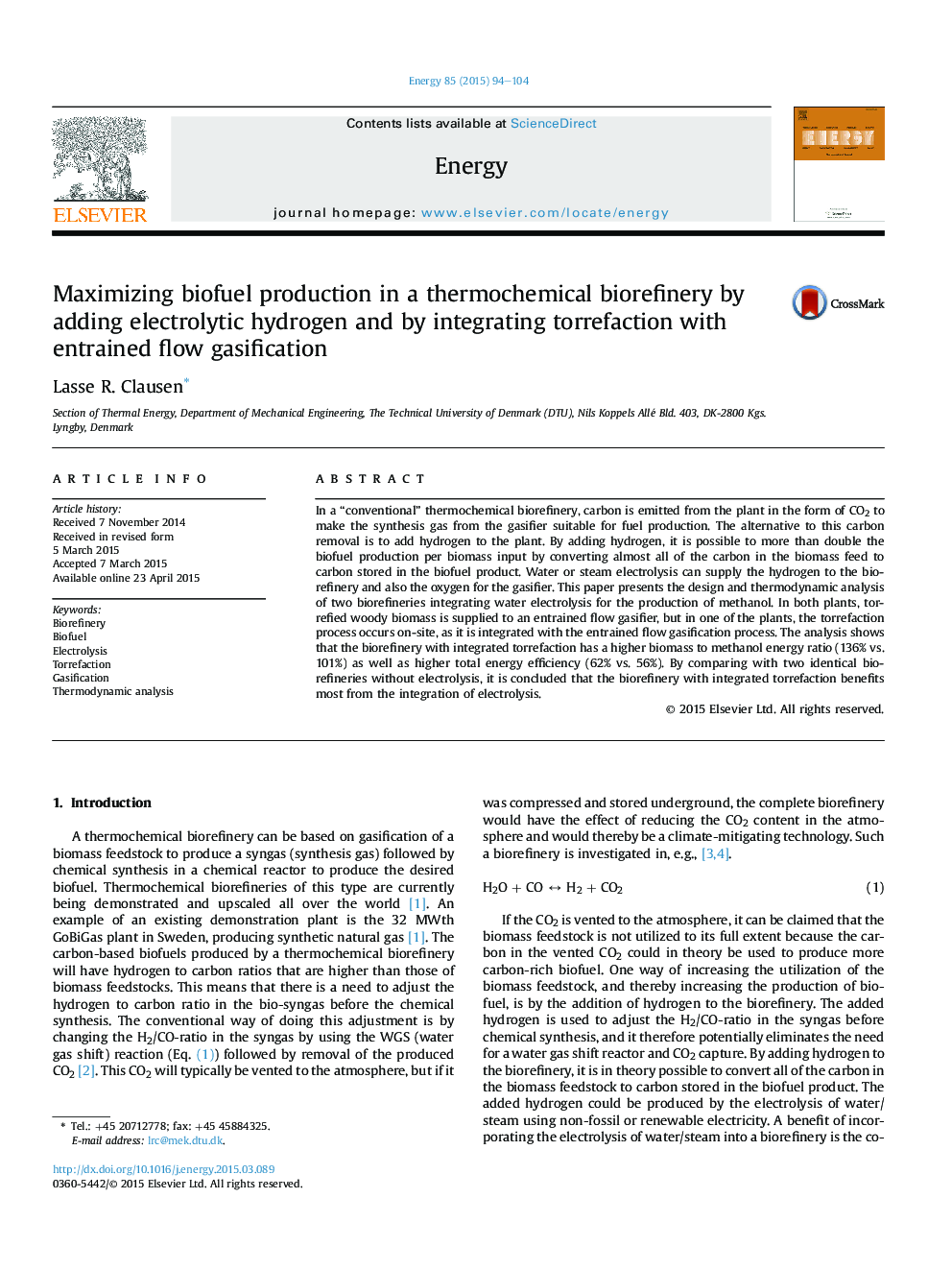| Article ID | Journal | Published Year | Pages | File Type |
|---|---|---|---|---|
| 1732062 | Energy | 2015 | 11 Pages |
Abstract
In a “conventional” thermochemical biorefinery, carbon is emitted from the plant in the form of CO2 to make the synthesis gas from the gasifier suitable for fuel production. The alternative to this carbon removal is to add hydrogen to the plant. By adding hydrogen, it is possible to more than double the biofuel production per biomass input by converting almost all of the carbon in the biomass feed to carbon stored in the biofuel product. Water or steam electrolysis can supply the hydrogen to the biorefinery and also the oxygen for the gasifier. This paper presents the design and thermodynamic analysis of two biorefineries integrating water electrolysis for the production of methanol. In both plants, torrefied woody biomass is supplied to an entrained flow gasifier, but in one of the plants, the torrefaction process occurs on-site, as it is integrated with the entrained flow gasification process. The analysis shows that the biorefinery with integrated torrefaction has a higher biomass to methanol energy ratio (136% vs. 101%) as well as higher total energy efficiency (62% vs. 56%). By comparing with two identical biorefineries without electrolysis, it is concluded that the biorefinery with integrated torrefaction benefits most from the integration of electrolysis.
Related Topics
Physical Sciences and Engineering
Energy
Energy (General)
Authors
Lasse R. Clausen,
